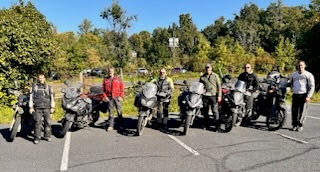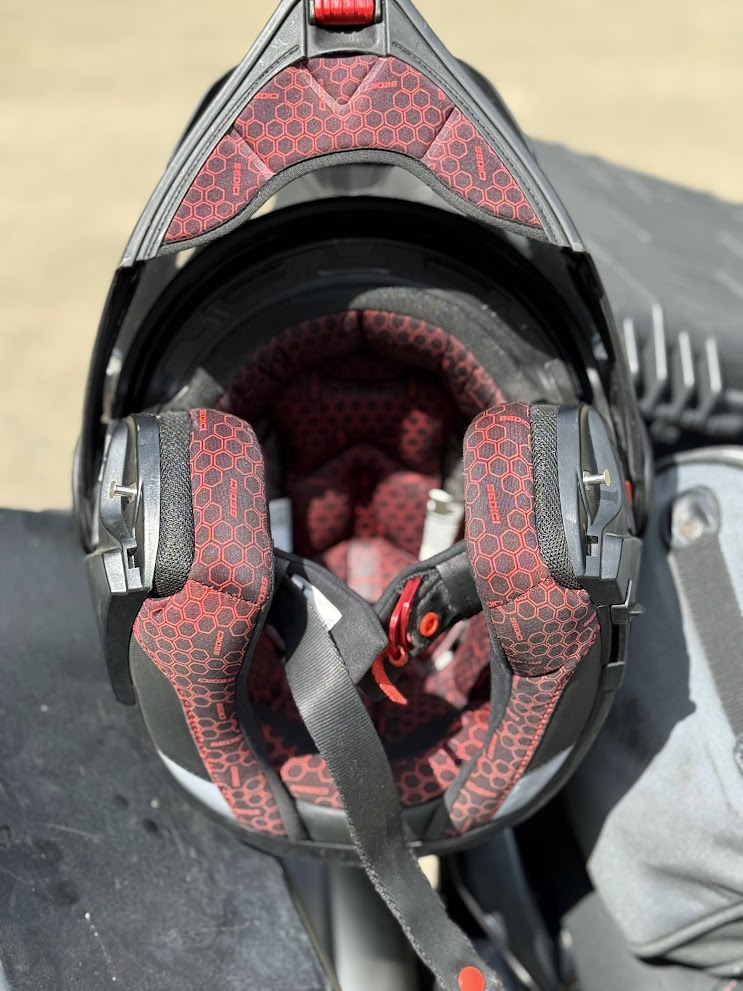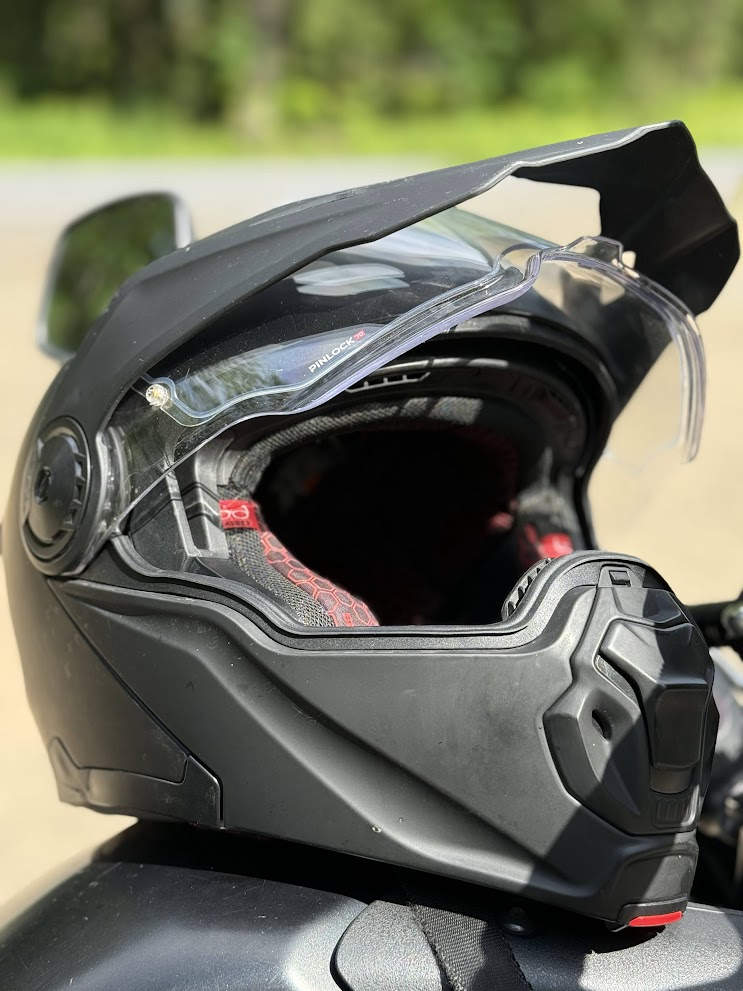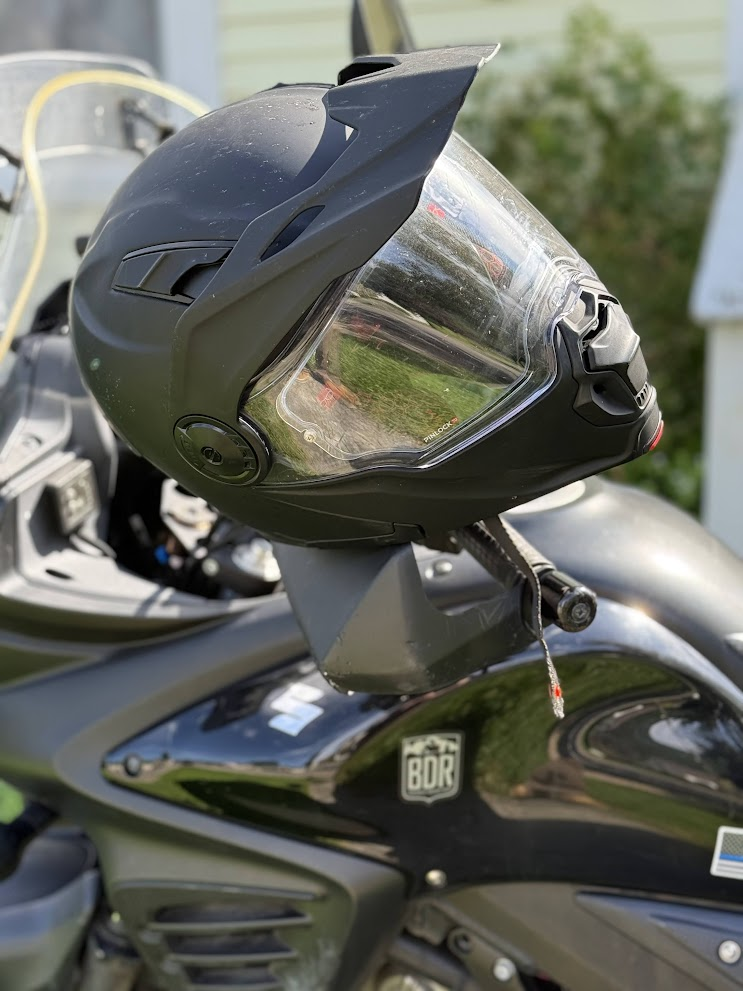It's Not Just About the Ride
A long ride isn’t about the route or the gear. Well, it is, but it isn't just about the route or the gear — it’s also about the people you share it with.
Riding with the right people on a long journey can make it unforgettable. Riding with the wrong people can make it...well, unforgettable.
Riding Is Personal… But It’s Not Always Solo
Riding tends to attract independent-minded people. I, for one spend, 95% of my time riding alone, and I rather enjoy it. And I'm definitely not the only one. When I discuss the best parts of adventure biking with fellow riders, they mention the solitude, the chance to clear one's mind, the sense of self-sufficiency they get from doing a thing alone.
That’s not to say that riding with a group — even on a long ride — can’t be a deeply rewarding experience. There are things you learn about yourself (and others) on group rides that you simply don’t learn when you’re solo. In fact, I recommend that every rider take at least one long, multi-day ride with a group, just to get a taste of the experience.What Makes a Good Riding Partner?
On long-distance or multi-day rides, riding partners matter more than most people realize -- in terms of rhythm, attitude, and shared priorities. There are quite a few things to consider when choosing your riding partners for a longer journey. Here are just a few things to consider:
- Adaptability – things will go wrong, and you want someone who rolls with it. As I discussed in a previous post, you (or they) will fall off the bike at some point. And on a trail with several friends, you (or they) have nowhere to hide. How will that rider react? How will they be treated by the group?
The best schedules will fail -- the whole group will pull into a restaurant parking lot tired and hungry, only to find it closed. Will there be a mutiny, or will your group soldier on? (I SO speak from experience on this one. It is only by the good grace of the group and a strategically placed sub shop that I am alive today to write this.)
Someone will lose their wallet or cell phone. How long will the group spend backtracking the trail to find it? Will that person insist on delaying the ride for hours, or backtracking a hundred miles to find a cell phone?
You can't plan for everything, but you can choose partners who adapt and share burdens well.Restaurant closed. Drink water. Ride on. - Pace Compatibility – mismatched speeds are either terrifying or exhausting, depending on which group you belong to. Our group rides "at the pace of the slowest rider." This makes things very safe -- but if the skill gap is too wide, it can really test your patience and group cohesion.
- Shared expectations – Some people want to camp. Others want motels. Some stop for every photo op, others hammer through. Lodging plans can be usually be handled in pre-planning, but the photo-op stops can be spontaneous, and don't play well with the hammer-throughs. Setting an "average" expectation helps.
- Mechanical and trail-side awareness – can they help in a pinch, or do they need rescuing? We have someone in our group we've nicknamed "MacGyver," so we count ourselves lucky. Most of us know how to contribute some mechanical fortitude to the trip, and the others know how to get out of the way. You'll have to identify who has the know-how, who has the trail-side awareness, and then let them do their thing. Who is who among your group?
- Good communication – even without comm systems, do they “get” the group flow? My experience has been that often develops during the ride. The key here is not to early disorganization of the group ruin the entire ride. This is a skill that can be honed while riding, and you are very likely to see some amazing results. Story later.
The Wrong Partner Can Ruin the Right Ride
On one multi-day ride, I had invited two riders to go with me. One was someone that I knew very well and trusted in stressful situations. The other was a good friend that I had only ridden with once or twice for maybe an hour at a time.
We faced a few substantial challenges — nothing extreme, just typical multi-day chaos — and most of them were met by the second friend with, “That’s it, I’m going home.” He never actually did anything to go home (we were 500 miles out, after all), but the phrase became his go-to reaction. Every time something went wrong: “That’s it, I’m done.”
He finished the ride, but that running commentary took a toll. It drained morale. It became the thing we had to work around — and it dulled the overall joy of the trip.
It wasn’t malicious. It was just his reflex. But mismatched stress responses — like mismatched paces or priorities — will rise to the surface once your wits are tested.
The Right Partner Makes Everything Easier
Now contrast that with my last BDR ride in the fall of 2024.
There were five of us — statistically risky when it comes to “plays well with others.” One was “MacGyver,” two were my brothers, and two were first-timers I hadn’t ridden with. But based on their backgrounds — one a pilot, the other in law enforcement — I had a good feeling.
We all joked that we were so laid back we needed a reverse gear just to get going. When you combine our skill pool, humor, and relaxed attitude toward life, we had high hopes. And it turns out… we were right.
We started that ride as five individuals, sometimes riding a half-mile apart. By the end, after weather, breakdowns, missed turns, and yes — the one fall (mine) — we came home as a unit. Figuratively and literally. Riding 15 yards apart. Laughing. Relaxed. In sync.
I’ll journal that whole trip in another post. But for now, just know: it worked because we worked well together.
| MABDR 2024 |
How to Choose Wisely
- Start with a short ride first. Multiple short rides. Don't spin them as "I'd like to invite you on a long journey, but first let's test our chemistry." Just ride. Have fun. See what shows up. If you click, then invite them on the long ride.
- Talk openly about expectations. Safety, pace, lodging, food -- all of it. I like to schedule a dinner a day or two before a long ride, just to go over these -- but even on short rides, have a little briefing. Does the new rider participate? Do they take the discussion to heart and apply it to the ride? The best laid plans will fail, of course, but having a plan makes it easier to define when you're off-plan. That matters.
- Watch how they handle setbacks. On shorter rides, how do they react to challenges? Do they lose their cool when the gas station is closed? Do they laugh it off? Do they blame someone? Small setbacks reveal a lot.
- See if they respect the rhythm of the ride. Do they fuel up when everyone else does, to prevent extra stops? Are they ready to go when the ride starts, and after each break? Do they know when to push versus pause?
- If you have a group you like, add one. One person among many is more likely to learn and adapt to your group's culture. Too many new riders may unintentionally form a "subgroup" and dilute the dynamic. Grow your riding circle slowly. The five of us are considering adding one, possibly two more riders for the next BDR. Carefully.
Final Thoughts
 |
| 800 miles behind us, 200 ahead of us. |
You don’t need your best friend on the trail — you need the right kind of friend. Someone who matches your rhythm, respects the journey, and doesn’t make things harder than they need to be.
If you've got friends who ride, odds are good they know all of this. And if not? Maybe send them here.
Just make sure that you don't set off on a three-day journey with someone based on "oddd are." That rider, your group, and you, will all thank you for it.













